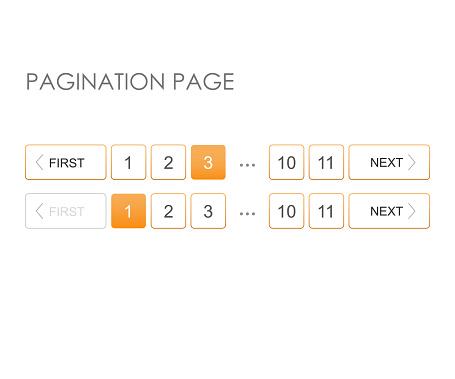Search here

01-Nov-2022
SEO-Friendly Pagination Strategies for Ecommerce
If you’re running an ecommerce store, then you know that pagination is an important element on your product pages. Not only does it help improve the user experience by breaking up long lists of products, but it can also have a positive impact on your SEO. In this blog post, we’ll explore some different pagination strategies that you can use on your ecommerce site to help improve your SEO. We’ll also touch on some common mistakes that you should avoid if you want to keep your site ranking high in the search engines.
What is Pagination
- Pagination is the process of dividing content into discrete pages. It is most commonly used to break up long articles or products lists into shorter, more manageable chunks. Pagination is an important part of SEO for ecommerce websites because it helps search engines index content more effectively and allows users to navigate large websites more easily.
- There are a few different ways to paginate content on an ecommerce website. The most common method is to simply divide products into multiple pages, with each page containing a certain number of items. This type of pagination is typically seen on product category pages and search results pages. Another way to paginate content is by using an Infinite Scroll feature, which loads additional content as the user scrolls down the page. This type of pagination can be used on product detail pages and blog articles.
- When implementing pagination on an ecommerce website, it is important to consider both usability and SEO. For maximum SEO benefit, make sure that each page has unique and relevant title tags, meta descriptions, and header tags. In addition, use canonical tags to avoid duplicate content issues. For usability, make sure that your pagination controls are easy to find and use, and that users can always go back to the first page of results if they need to.
Different Types of Pagination
- Pagination is a process of dividing content into smaller, manageable pieces. It is commonly used in long-form content, such as blog posts, articles, and ecommerce product catalogs. There are several different types of pagination, each with its own advantages and disadvantages.
- One common type of pagination is numbered pagination, where each piece of content is assigned a number. This type of pagination is easy to understand and use, but can be problematic for SEO purposes if not done correctly. Another type of pagination is infinite scroll, where new content loads automatically as the user scrolls down the page. This can be a good option for users, but can again be problematic for SEO if not implemented properly.
- A third type of pagination is load more buttons, where a button must be clicked to load more content. This can help with SEO by allowing users to control how much content they want to load at one time, but can also be frustrating for users if they have to click the button too often.
- Finally, there is the option of using no pagination at all. This can work well for short-form content or if you have a strongly-structured website with good navigation. However, it can make long-form content difficult to read and can negatively impact your SEO if not done carefully.
- The best pagination strategy for your website will depend on your specific needs and goals.
Ecommerce Pagination Strategies
- As ecommerce sites continue to grow in popularity, it is important to implement pagination strategies that are both user-friendly and search engine friendly. By using a few simple techniques, you can ensure that your site's pagination is optimized for both users and search engines.
- One key factor to consider when implementing pagination is the use of rel='prev' and rel='next' tags. These tags help to indicate to both users and search engines which pages are part of a sequence. For example, if you have a sequence of 5 pages, the rel='prev' tag would be placed on page 4 ( linking to page 3) and the rel='next' tag would be placed on page 2 (linking to page 3).
- Another important factor to consider is the use of canonical tags. Canonical tags help to tell search engines which version of a page should be indexed. For example, if you have an ecommerce site with different versions of a product listing (such as one version for mobile devices and another for desktop), you would want to use canonical tags to tell search engines which version should be indexed.
- Finally, it is also important to keep in mind the overall structure of your URLs when implementing pagination. Your URLs should be easy for both users and search engines to understand. A good rule of thumb is to use numbers or short words in your URLs (e.g., www.example.com/page/2 or www.example.com
Conclusion
Ecommerce pagination can be a tricky thing to perfect, but it's worth taking the time to get it right. By following the tips in this article, you can ensure that your ecommerce store is using an SEO-friendly pagination strategy that will help you rank higher in search engine results pages and drive more traffic (and sales) to your store. Do you have any other tips for optimizing ecommerce pagination? Share them with us in the comments below!

SEO and Content Writer
I am Drishan vig. I used to write blogs, articles, and stories in a way that entices the audience. I assure you that consistency, style, and tone must be met while writing the content. Working with the clients like bfc, varthana, ITC hotels, indusind, mumpa, mollydolly etc. has made me realized that writing content is not enough but doing seo is the first thing for it.
Join Our Newsletter
Subscribe to our newsletter to receive emails about new views posts, releases and updates.
Copyright 2010 - 2025 MindStick Software Pvt. Ltd. All Rights Reserved Privacy Policy | Terms & Conditions | Cookie Policy